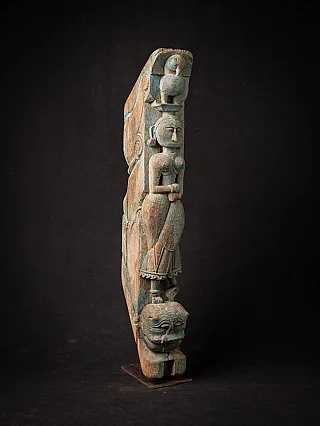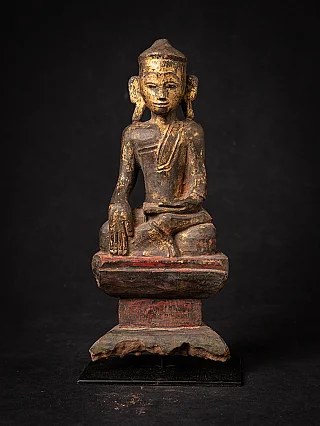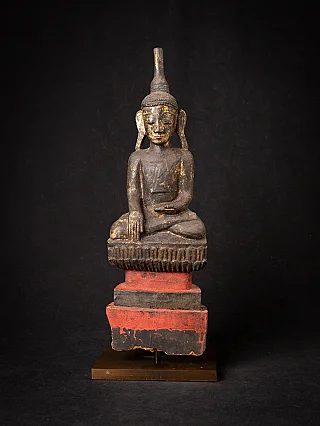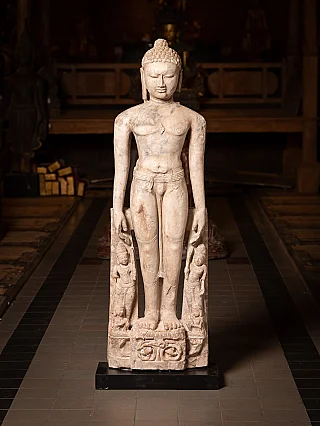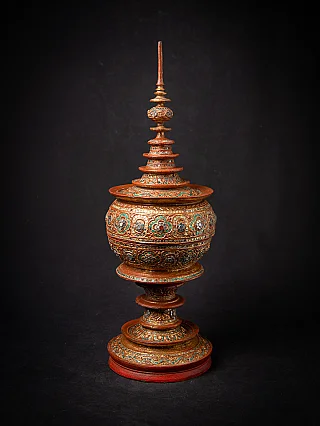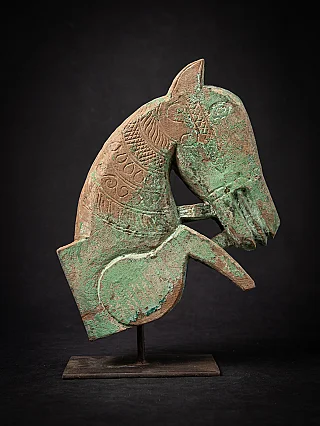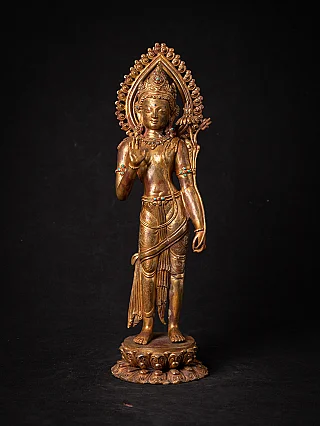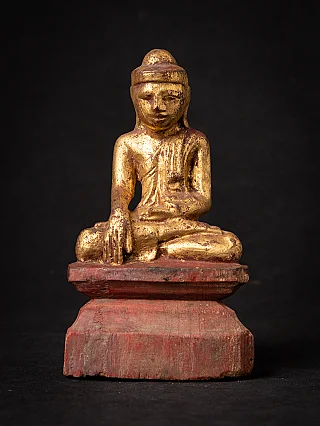Steps to prepare an Antique Singing Bowl, traditionally

View our collection of Buddha statues in our gallery
Once I had an opportunity to meet Mr. Subin Chitrakar, an artist who molds beautiful antique and decorative pieces. By antique and decorative pieces, I meant sculpture of Buddha, Singing Bowl, Bajra, etc. Even though every person has respect towards Buddha, they have been using the Buddha statues for the interior decoration as well. The main motive to use the Buddha statue is to spread the calmness and positivity, they have within themselves, in the surrounding.
The visit with Mr. Chitrakar was all possible only because of my friend, Rahula. Mr. Chitrakar was his maternal Uncle. He has been residing in Patan, Nepal and his workshop is in the backyard of his home. Mr. Chitrakar along with his brothers and few workers have been creating fascinating works from the ages. I learned that it was their family business. Therefore, they have precision with their antique pieces. The workshop is quite spacious and they were making Buddha statue and singing bowl at the same time. Mr. Chitrakar was assisting to fellow workers to make the singing bowl while his brother was assisting to make Buddha statue.
How Singing Bowls are made

I have learned how the metal statues were made, but the singing bowl was my first experience. On that day, I had a chit chat with Mr. Chitrakar and he helped me to understand about the procedure of making antique singing bowls.
But first, let me clear you on one thing, Antique singing bowls and singing bowls have their difference mainly due to the procedure that has been undertaken to make it. They are not regarded as same and do have a difference within them. Antique singing bowls are ancient singing bowls which are hand hammered. Even this term is used for the present day bowls which are made through hammering by the hands. This technique requires patience and more effort. The material used to make antique singing bowls is bronze. The surface is somewhat rough but produces a most pleasant sound.

On the other hand, singing bowls are modern day bowls which are made using modern day techniques especially sand casting. Singing bowls are made up of brass and are not time-consuming in comparison to antique singing bowls. The surface is smooth, but produce low sound in comparison to antique singing bowls. We can find decoration with mantras in singing bowls which makes them attractive.
As Mr. Chitrakar said, one need lot of patience and effort to carve antique singing bowl. He then added, at the beginning of the process, we have to melt the metal. Therefore, it is placed in furnaces having a heating temperature of about 1000 degree Celsius. After the metal is melted completed, it is then poured in the dice. The dice help to mold the metal to form a basis for the singing bowl. We have to be very careful in this step because if the metal cools down completely then it will crack down when hammered and the shape will collapse. So as soon as the metal becomes solid but soft in nature, it is hammered. After that, the metal is heated again to make it soft. It is hammered again. The motive to reheat the metal is to gain the metal’s softness nature in order to prepare into the desired shape. This process of hammering the metal and then heating continues until the desired shape is achieved. When the desired shape is achieved the bowl is made smoother in shape with detail. But we should realize that these hand hammered bowls look rougher than the singing bowls made by sand casting and other modern day techniques. Even though, it looks rough there is no compromise in the sound because it is more pleasing and lasts a longer period of time.
View our catalog for beautiful and antique statues and crafts
Singing Bowl and Mallet: Vibrational Sound

After the completion of the singing bowl, he showed us how to produce sound using a mallet. A mallet may be a stick in which a rubber or a leather is wrapped at one end of the stick. He placed the bowl in his left palm and then with the help of a mallet, he hit the bowl gently and then he turned the mallet around at the edge of the singing bowl.
It was very nice of Mr. Chitrakar that he helped me to understand how an antique singing bowl is made without any hesitation. I thanked him and we returned from there after having lunch. It was very nice of him that he offered us a big lunch as well.
Share this page

















